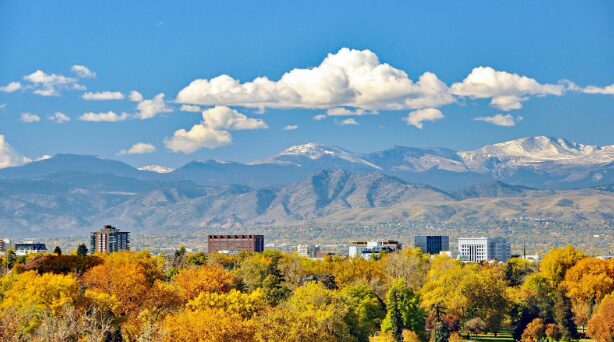Colorado summers are a blessing and a challenge. With high elevation, intense sun, and dry conditions, creating and maintaining a thriving landscape takes more planning than in milder regions. That’s why so many homeowners look to Denver landscaping companies for help getting it right from the start.
But even if you’re managing your own yard, there’s plenty you can do to keep it looking sharp and staying healthy during the hot season. From choosing the right plants to strategic watering, success lies in working with the climate instead of against it. Here are 7 practical, proven tips for better landscaping through the Colorado summer.
1. Choose Native and Drought-Tolerant Plants
It’s tempting to go for flashy flowers or tropical-looking greenery, but many of those popular choices won’t stand a chance in Colorado’s unpredictable summer. The state’s climate is dry, the soil leans toward clay-heavy in many areas, and water resources can be tight. Native and drought-tolerant plants are better adapted to these conditions and tend to thrive where others fail.
Blue grama grass, the state grass of Colorado, is a great option for low-maintenance lawns or ornamental patches. Other winners include Russian sage, yarrow, blanket flower, and penstemon. These plants don’t just survive with less water, they also attract pollinators like bees and butterflies, helping support local ecosystems.
If you’re unsure what to pick, Colorado State University’s extension services offer detailed planting guides specific to your zone. One of the smartest moves you can make for long-term success is choosing native landscaping that aligns with your area’s natural conditions.
2. Water Early and Efficiently
In the heat of summer, water evaporates quickly. If you’re watering at noon, most of it might be gone before your plants get what they need. The best time to water is early morning, ideally between 5 and 9 a.m. At that time, temperatures are cooler, the air is calmer, and the ground can absorb moisture more effectively.
Efficient watering isn’t just about timing. It’s also about how you deliver the water. Sprinklers can be convenient, but they’re often wasteful in Colorado’s breezy conditions. Wind blows the spray off course, and sun can evaporate it before it ever reaches the roots.
Drip irrigation or soaker hoses are far more efficient. They release water directly at the soil line, right where the roots need it. You also get less weed growth this way because you’re not soaking everything indiscriminately.
Don’t forget to inspect your system regularly. Clogged emitters, leaky hoses, or misaligned sprinkler heads can ruin even the most well-planned watering schedule.
3. Use Mulch to Retain Moisture
Mulch is your best friend in a dry climate. A generous layer of mulch around trees, shrubs, and flower beds does more than improve appearance. It acts as insulation for the soil, keeping it cooler and slowing evaporation. That means your plants get more benefit from every drop of water.
Organic mulch like bark chips, shredded wood, or pine needles is ideal. These materials gradually break down and enrich the soil with nutrients. A 2- to 3-inch layer is usually enough, but make sure not to pile it against stems or tree trunks. Doing so traps moisture right at the base, which can cause rot and attract pests.
Mulch also helps with weed control. By blocking sunlight, it prevents many weed seeds from germinating. That means less work for you and fewer competitors stealing water and nutrients from your plants.
To dive deeper into the science behind mulch, the USDA Forest Service outlines how mulch significantly improves both soil moisture retention and temperature regulation.
4. Mow High, Not Low
Colorado lawns struggle in the summer when they’re cut too short. Many homeowners think cutting grass lower will reduce the need for mowing, but it actually causes more problems. Short grass leaves soil exposed to the sun, which dries it out faster and weakens the grass. It also allows weed seeds to get established more easily.
Set your mower blade to between 2.5 and 3 inches for most common grass varieties. This height helps grass develop deeper roots, stay green longer, and withstand heat stress better. It also creates a lush, full appearance that looks better to the eye.
Sharp mower blades are just as important as the height setting. Dull blades tear the grass instead of slicing it cleanly, which leads to frayed tips and a brown, ragged appearance. Sharpen your mower blades at least once during the mowing season, more if you notice poor results.
5. Fertilize Carefully
Fertilizer can help your landscape grow, but overdoing it during the heat of summer is a common mistake. Excessive fertilizer—especially nitrogen-rich blends—can burn plant roots, cause leaf scorch, or trigger fast growth at the wrong time. Plants forced into rapid growth during stressful heat conditions are more susceptible to disease and pest damage.
A slow-release fertilizer is your safest bet. These break down gradually, supplying nutrients in a steady, manageable way. Unless a soil test shows a specific deficiency, you should avoid high-nitrogen products during the peak of summer.
Early spring and late summer are typically better times for fertilization in Colorado. If you apply during the hotter months, make sure to water deeply afterward to prevent any root damage.
6. Plan for Hail and Sudden Weather Swings
Anyone who’s lived through a Colorado summer knows how quickly things can change. One minute the sun is shining, the next a hailstorm is ripping through your garden. While you can’t stop the weather, you can plan your landscape with resilience in mind.
Install windbreaks like hedges, evergreen trees, or wooden fencing to help shield your landscape from sudden gusts and protect fragile plants. You can also place more delicate plants near walls or taller shrubs that provide shelter from hail.
For vegetable beds or container gardens, keep a roll of frost cloth or shade cloth handy. These lightweight fabrics can be quickly unrolled to cover plants during extreme heat, hail, or late-spring frost. Just don’t forget to secure them well—Colorado wind can be unforgiving.
Raised beds are another good idea. They improve drainage during heavy rains, warm up faster in the spring, and give you more control over soil quality and structure.
7. Refresh Your Landscape with Hardscaping
If you’re tired of high-maintenance lawns or thirsty flower beds, hardscaping offers a low-water alternative that still looks beautiful. Gravel pathways, stone patios, retaining walls, and dry creek beds not only reduce water use, they also create structure and usable space in your yard.
Hardscaping doesn’t mean replacing everything with rock. You can blend functional features like flagstone steps or benches with native grasses and shrubs for a balanced, organic feel. Consider adding a pergola or small shade structure to make the area comfortable in the hot sun.
These features require little upkeep, and they won’t wilt or fade in July. Just make sure any materials you use are rated for freeze-thaw cycles, especially in higher elevations where temperature swings are more dramatic.
Colorado summers don’t have to mean sacrificing curb appeal or spending every weekend moving sprinklers around. With the right mix of plant choices, water-saving strategies, and thoughtful design, your yard can thrive in the heat and look fantastic while doing it. Whether you tackle it yourself or bring in a pro, a few smart decisions now can set you up for an easier, more beautiful season ahead.



































